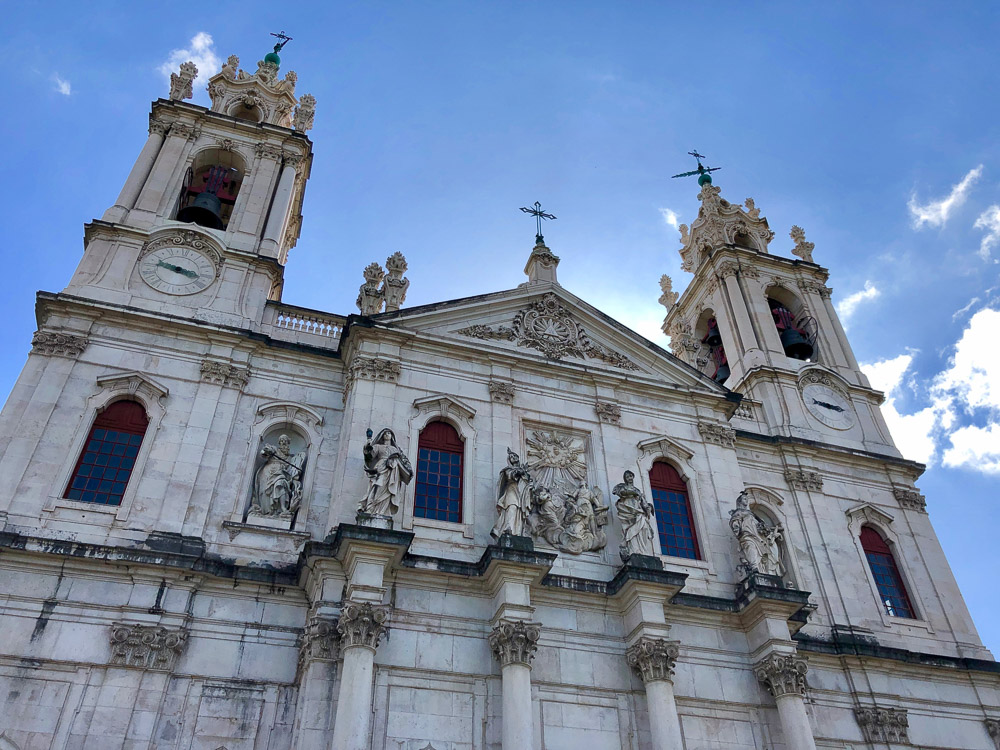Tucked away in Lisbon’s charming Estrela district, the Basilica da Estrela might not be as famous as the Jerónimos Monastery or the Tower of Belém, but it’s a beautiful landmark that deserves your attention!
The blend of Baroque and Neoclassical designs, coupled with its stunning dome, makes it one of the most beautiful spots in the city, with panoramic views that stretch down to the Tagus River.
Exploring the Basílica da Estrela gives you a chance to dive into a piece of Lisbon’s royal history and experience a quieter side of the city that many tourists overlook. So, to help you plan your visit, I’ve compiled all the information you need in this post!
Ready? Let’s dive in!
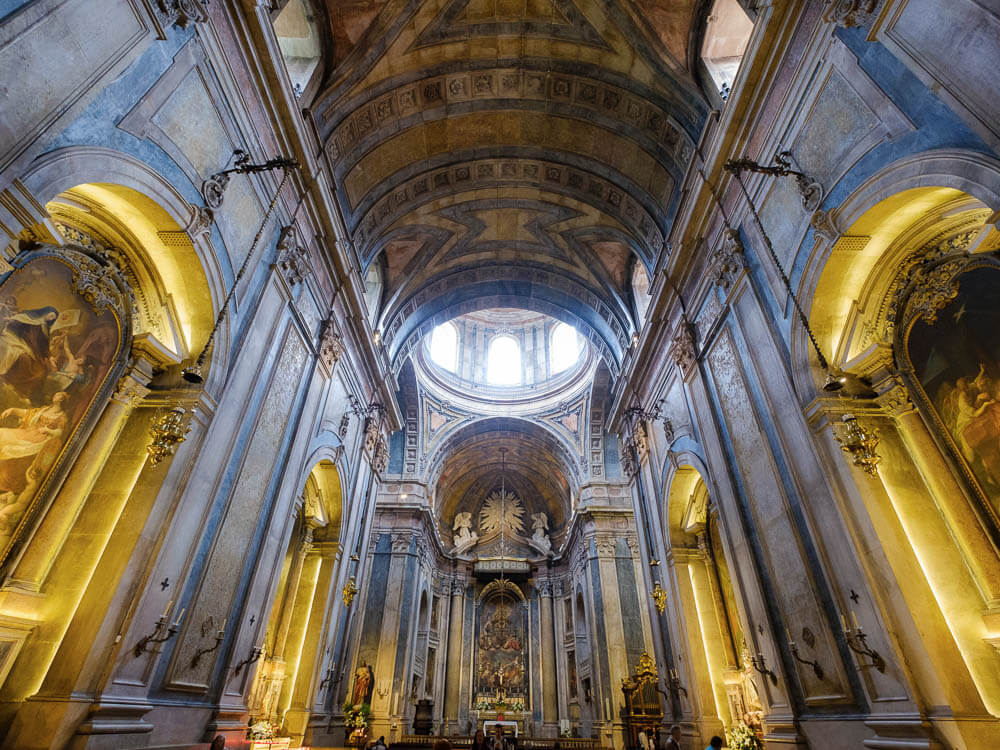
Index
- Highlights
- Tickets and guided tours
- Opening hours and best time to visit
- How to get there?
- Accessibility and other information
- Nearby attractions
- History
- Architecture
1. Highlights of Basílica da Estrela
1.1. Queen Maria’s tomb
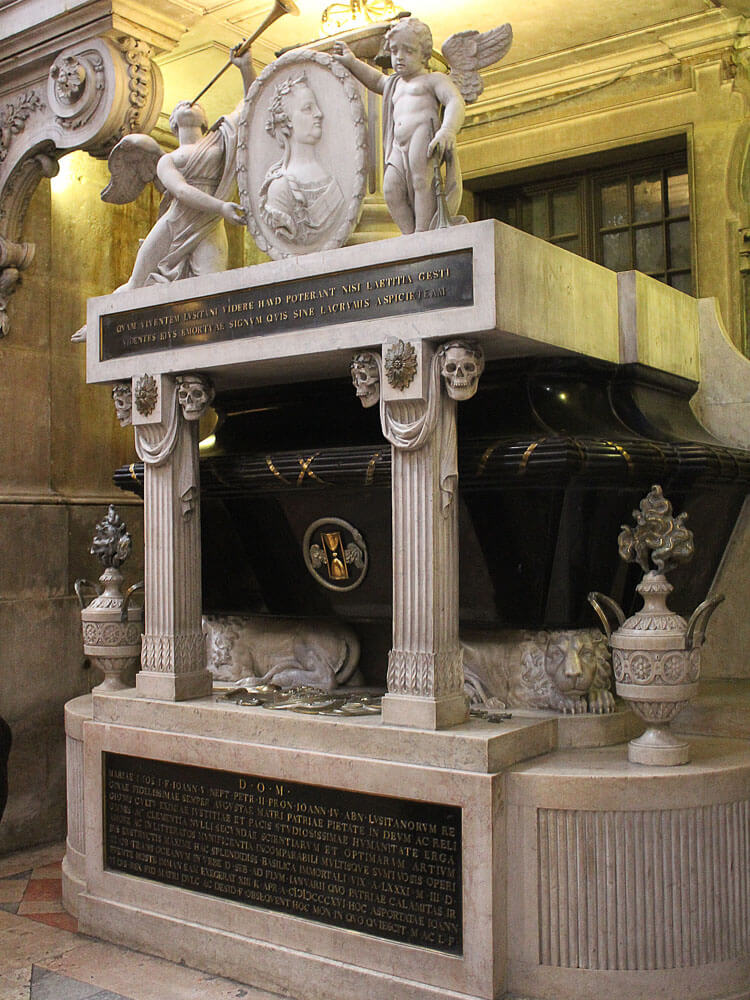
Inside the basilica, you’ll find the tomb of Queen Maria I, an influential figure in Portuguese history.
After spending her final years in Brazil, her remains were returned to Lisbon, symbolizing the deep ties between the monarch and her homeland. The tomb, adorned in Empire style, reflects the elegance and grandeur of her era.
As the only Braganza monarch not buried in Lisbon’s National Pantheon, Queen Maria I’s final resting place adds a unique historical significance to the Basílica da Estrela.
Visiting her tomb allows you to appreciate not only the artistic craftsmanship of the time but also the personal and political legacy of a queen who shaped Portugal’s history.
1.2. Nativity Scene
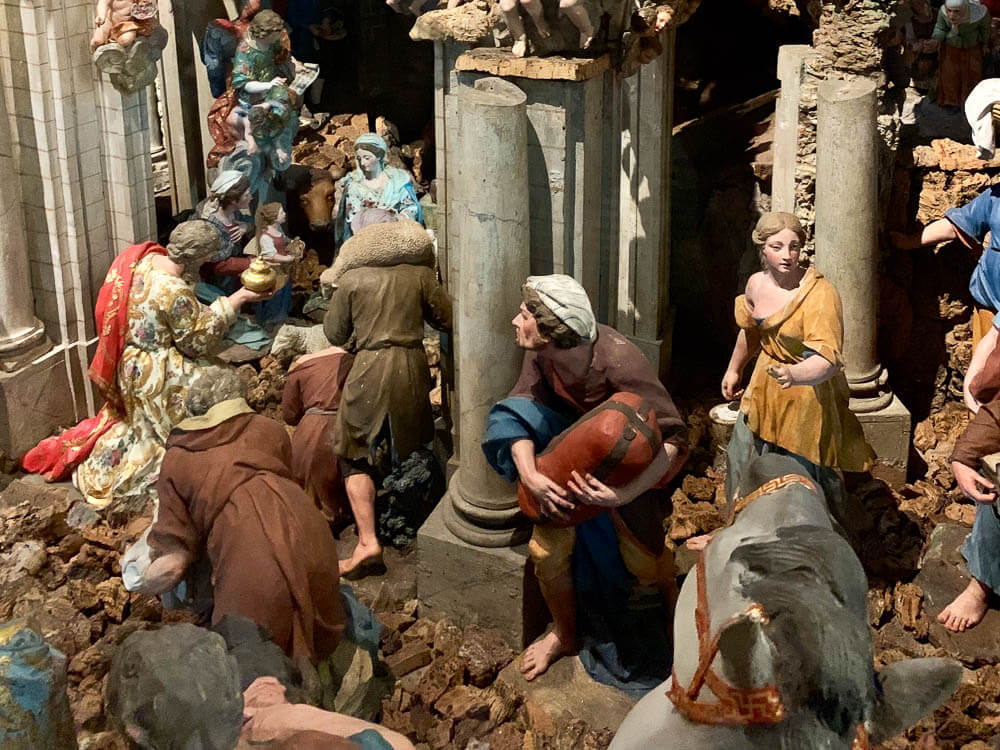
One of the basilica’s most captivating features is its permanent Baroque nativity scene, crafted by renowned Portuguese sculptor Machado de Castro.
This extraordinary display, made from terracotta and cork, consists of over 500 figures, intricately depicting scenes from the birth of Jesus as well as everyday life in 18th-century Portugal.
As the largest nativity scene in the country, it’s a stunning example of religious art and a must-see for anyone interested in Portuguese culture and history.
1.3. Views from the Dome

Though climbing the 114 steps to the dome of Basílica da Estrela is a bit challenging, it’s well worth the effort. From the top, you’re treated to sweeping views of Lisbon that capture both its historic and modern landmarks.
Gaze across the city to spot São Jorge Castle, the iconic 25 de Abril Bridge, and the Amoreiras towers, each representing a different chapter in Lisbon’s architectural story.
The view from the dome offers a unique perspective on how the city’s past and present coexist, making it an unmissable experience.
1.4. Interiors
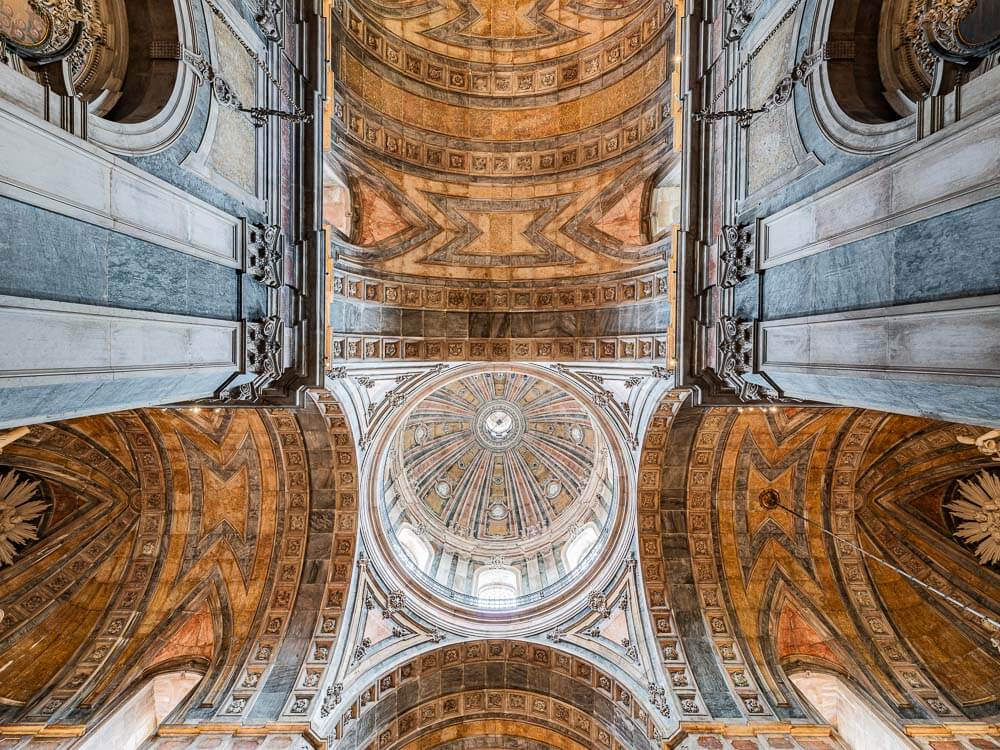
The Basílica da Estrela’s interior is a masterpiece of architectural and artistic design. With its Latin cross floor plan, barrel-vaulted ceilings, and colorful Portuguese marble, the basilica is a feast for the eyes.
Highlights include The Last Supper by Pompeo Batoni, the intricate sculptural work by Machado de Castro, and two magnificent 18th-century organs.
These elements, combined with the natural light that filters through the dome, create an atmosphere of serene beauty and spiritual reflection.
2. Tickets and Guided Tours
The Basílica da Estrela in Lisbon offers several ticket and tour options to suit different preferences. The basilica is open to the public for free, but if you’re interested in viewing the nativity scene, there’s a small fee of 2 euros. For those wanting a panoramic view of Lisbon, access to the dome costs 4 euros.
Besides that, this landmark is also featured in various city tours, including hop-on hop-off buses and tuk-tuk tours, which provide a quick overview of Lisbon’s major attractions. It’s perfect for first-time visitors or those short on time!
For a more in-depth experience, consider joining a small group or private guided tour, which offer detailed insights into the history and architecture of the basilica.
3. Opening Hours and best time to visit
The Basílica da Estrela in Lisbon is open daily from 7:30 AM to 8:00 PM, offering plenty of time to explore this significant site. For a quieter experience, consider visiting early in the morning when the basilica is less crowded.
This allows you to take in the intricate details and enjoy the serene surroundings with fewer distractions. Besides that, the soft morning light also provides the perfect conditions for photography, capturing the beauty of the basilica’s architecture.
4. How to get there?
The Basílica da Estrela, situated at Largo da Estrela in Lisbon, is easily accessible via public transport. You can reach the basilica by taking trams 25 or 28, which pass close by and offer scenic views of Lisbon’s neighborhoods.
However, these trams are popular and can become crowded, especially during peak hours. To avoid the crowds, consider traveling early in the morning or later in the evening.
Alternatively, several bus routes, including 709 from Restauradores Square and 713, 773, and 774, also stop near the basilica and are usually less crowded than the trams.
If you prefer using the metro, the closest stop is Rato station on the yellow line. From there, it’s about a 15-minute walk to the Basílica da Estrela, giving you the opportunity to explore more of Lisbon’s streets as you make your way to this historic site.
5. Accessibility and other information
The main floor of the basílica is accessible to wheelchair users, allowing them to experience the key features of the site. However, due to structural limitations, wheelchair access is not available for the terrace.
Visitors are encouraged to support the ongoing maintenance and restoration of the basílica through donations. Besides that, a gift shop on-site offers souvenirs and religious items, with proceeds also contributing to these efforts.
Aditionally, when visiting the Basílica da Estrela, you should keep in mind that it’s important to avoid wearing shorts and revealing clothing to maintain a respectful atmosphere.
6. Nearby Attractions
A visit to Lisbon wouldn’t be complete without exploring the attractions near the Basílica da Estrela. For example, just a 10-minute walk away is the Campo de Ourique Market, where you can try a variety of Portuguese dishes.
For art enthusiasts, the Ancient Art Museum is about a 15-minute walk through the charming Lapa neighborhood. This museum houses an impressive collection of European and Oriental art spanning various periods.
Right across from the basílica, you’ll find Jardim da Estrela, a beautiful park perfect for a leisurely walk or some relaxation. Also nearby is the São Bento Palace, which serves as the Portuguese Parliament and offers a peek into the country’s political history.
All these sites are easily accessible on foot, making this area a culturally enriching part of your Lisbon itinerary.
7. History of Basílica da Estrela
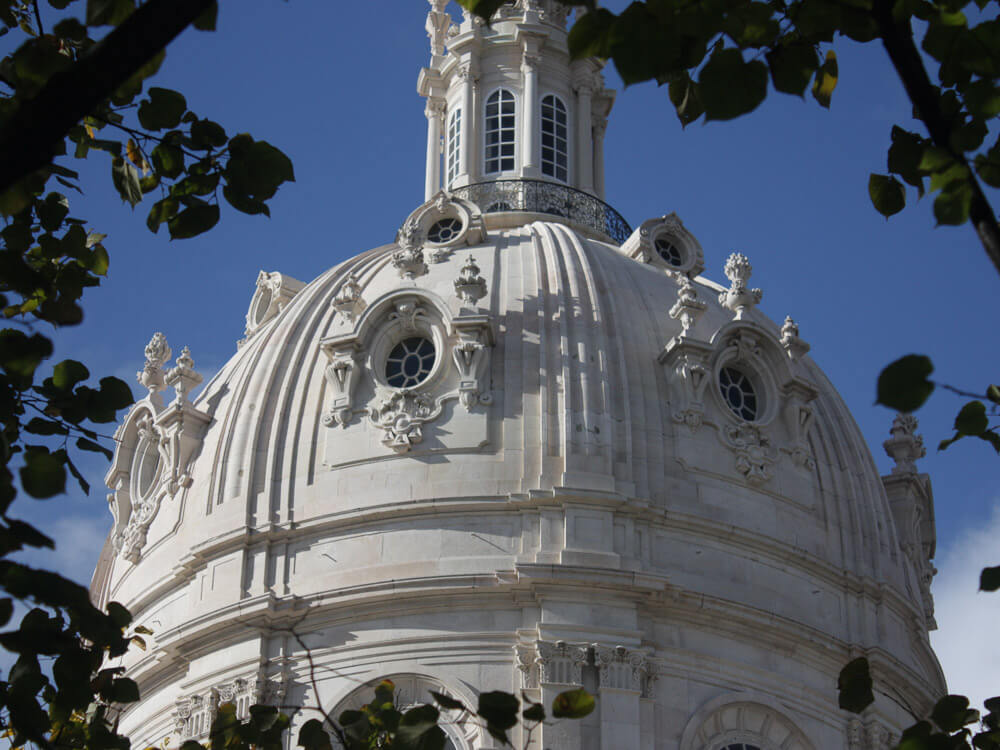
The Basílica da Estrela, also known as the Basílica of the Sacred Heart, stands as a testament to Queen Mary I’s devotion and leadership over Portugal and Brazil.
The church was commissioned by Queen Mary I after the birth of her son, José, in 1761, fulfilling a vow she made for a healthy heir. Construction began in 1779 under architect Mateus Vicente de Oliveira and was later completed by Reinaldo Manuel de Sousa.
Tragically, José died of smallpox in 1788 at the age of 27, just two years before the basílica was completed in 1790, meaning he never saw his mother’s promise fulfilled.
Today, visitors to the Basílica da Estrela can delve into its rich history, admire its intricate architecture, and gain a deeper understanding of its place in Portuguese cultural heritage.
8. Architecture of Basílica da Estrela
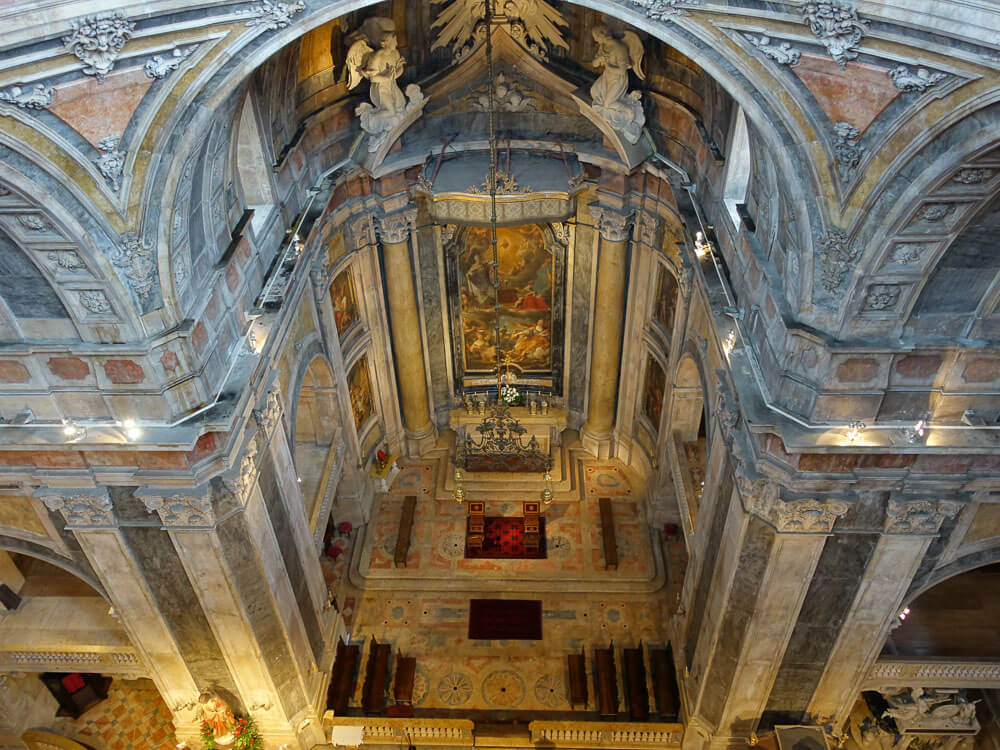
The Basílica da Estrela in Lisbon, constructed in the late 18th century, showcases a harmonious blend of Neoclassical and Baroque architectural styles. Its striking rococo dome and twin bell towers are complemented by pastel hues and asymmetrical designs.
The facade, inspired by the Mafra National Palace, features allegorical statues that symbolize religious and historical themes. Meanwhile, a central pediment supported by Corinthian columns adds grandeur to the entrance.
One of the basilica’s most remarkable features is its dome, offering panoramic views of Lisbon. Reminiscent of St. Peter’s Basilica in Rome, this vantage point invites visitors to reflect spiritually while taking in stunning views of the city.
Climbing to the top rewards you with detailed architectural perspectives and expansive urban landscapes, making it a must-visit for both history enthusiasts and architecture lovers alike.
Don’t miss out on the Basílica da Estrela
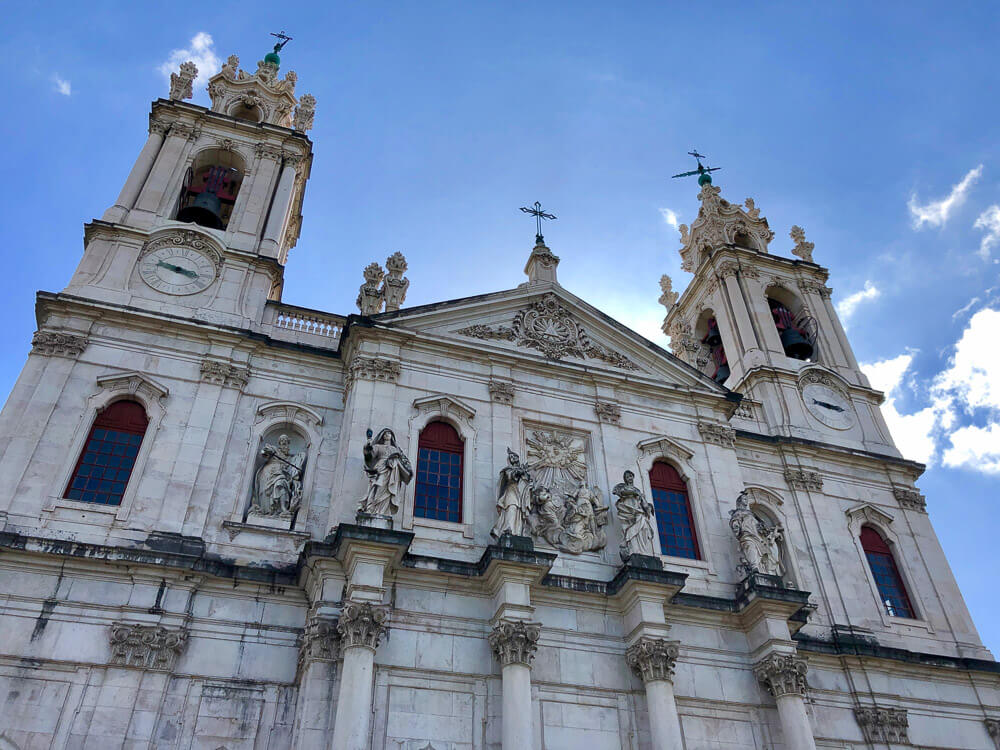
While the Basílica da Estrela might not top the list of Lisbon’s most famous attractions, it offers a unique blend of history, architecture, and breathtaking views.
Its peaceful atmosphere and stunning design make it a perfect spot for those looking to explore Lisbon’s cultural heritage away from the crowds.
Whether you’re a history buff, an architecture enthusiast, or simply looking for a beautiful place to reflect, the Basilica da Estrela is a must-visit on any trip to Lisbon!

